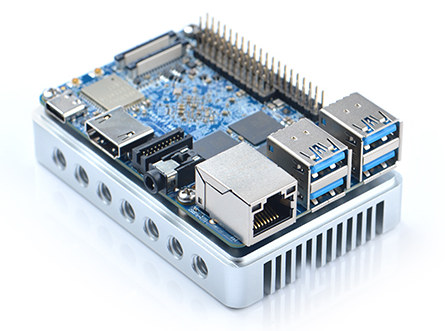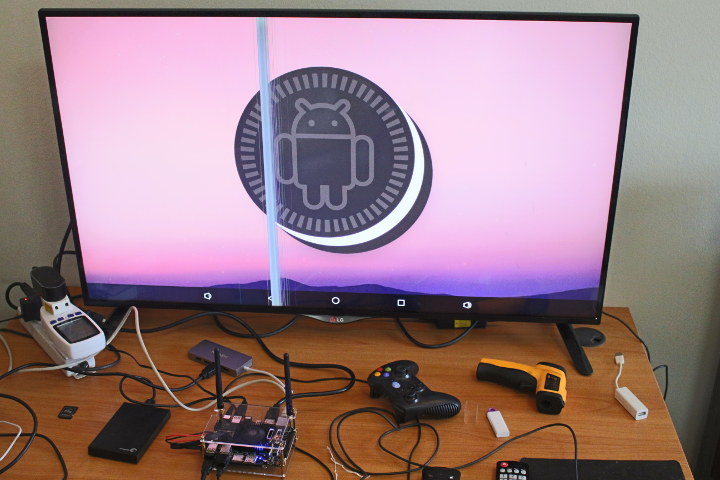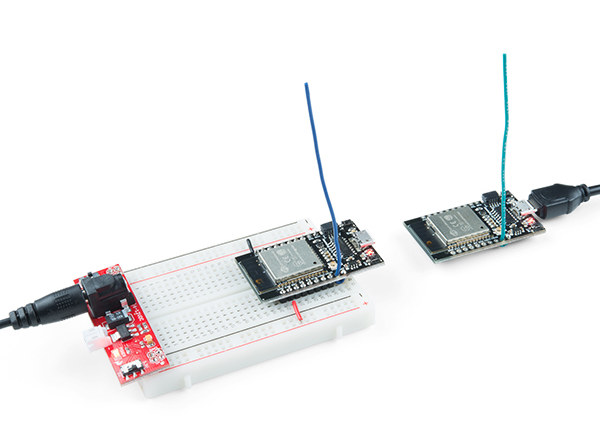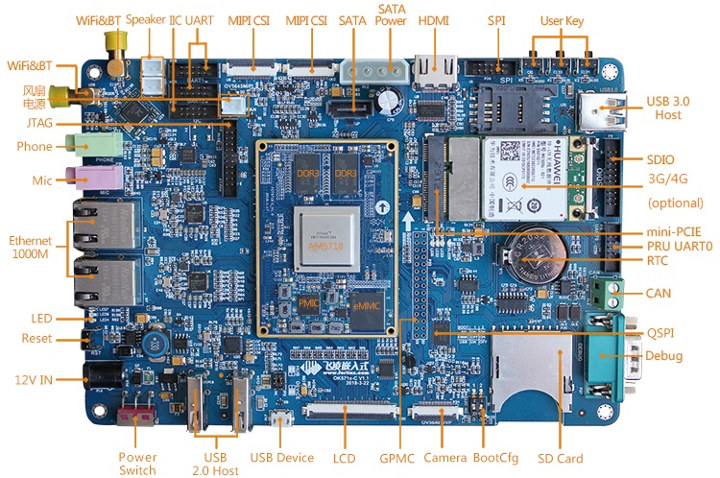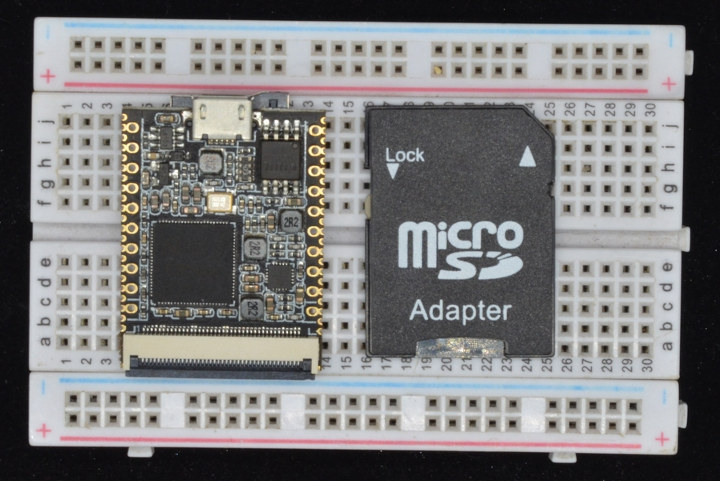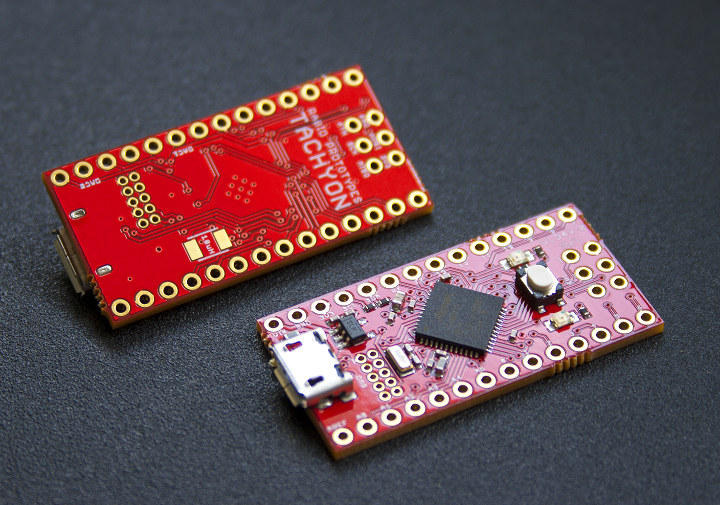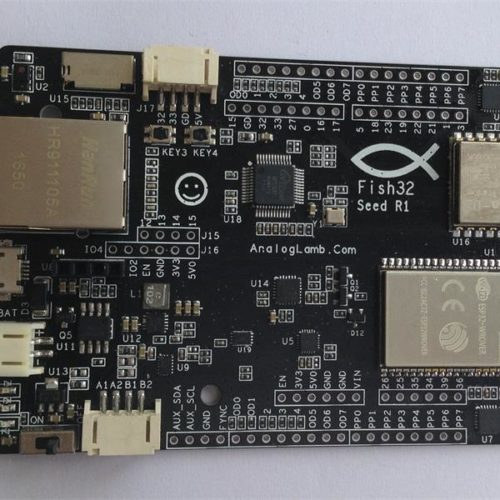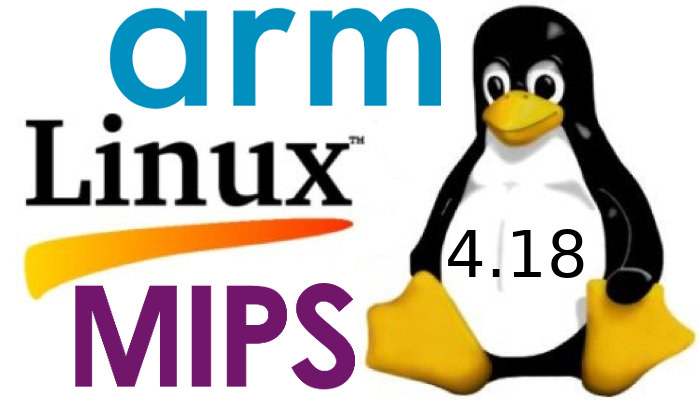As expected, FriendlyELEC has now launched NanoPi M4 board, a lower cost version of NanoPC-T4 Rockchip RK3399 SBC, and mostly following Raspberry Pi form factor. How much you may ask? That would be $65 plus shipping for the 2GBRAM version, and $95 for the 4GB RAM version, which means it sells in the same ballpark as RockPro64 board. NanoPi M4 board specifications: SoC – Rockchip RK3399 big.LITTLE hexa-core processor with 2x Arm Cortex-A72 @ up to 2.0GHz, 4x Cortex-A53 @ up to 1.5GHz, a Mali-T864 GPU with support OpenGL ES1.1/2.0/3.0/3.1, OpenVG1.1, OpenCL, DX11, and AFBC, and a VPU with 4K VP9 and 4K 10-bit H265/H264 6decoding System Memory – Dual-channel 4GB LPDDR3-1866, or dual-channel 2GB DDR3-1866 Storage – eMMC module socket, micro SD card slot Video Output HDMI 2.0a up to 4K @ 60 Hz with HDCP 1.4/2.2 support 4-Lane MIPI-DSI connector Audio – 3.5mm headphone jack, HDMI digital audio […]
Review of Firefly-RK3399 Board with Android 8.1 Firmware
Last week, I tested Android 7.1 on NanoPC-T4 Rockchip RK3399 SBC, and this week, I’ve given a try at Android 8.1 (Beta) on Firefly-RK3399 Board. Since it’s still a beta version, I’m expecting some issues and we’ll have to see how it performs at this stage of development. Firefly-RK3399 Kit Assembly I had to do some assembly before starting the board. It took me some 30 minutes to complete, so I’ll quickly go through the steps. Beside the default kit, the company also sent me a fansink ($7.9) and an M.2 to SATA board + required cable ($16) which will be part of the assembly instructions. The first step is to peel off the protective films on both sides of the acrylic case. I then fastened my own 2.5″ hard drive with four screws provided in the default kit. I then installed the M.2 to dual SATA adapter board in […]
How to Make a Cheap Single Channel Gateway with an ESP32 LoRa Board
Actual LoRaWAN gateways based on Semtech SX1301 concentrator can be pretty expensive, and even if you take a LoRa gateway design based on Raspberry Pi for indoor placement or experimentation, price is still around $200. A much cheaper way (~$70) is to use a single channel LoRa gateway, which as the name implies only support one channel, which limits the number of nodes, and forces you to set the nodes at the same frequency as your gateway. Those are not really suitable for commercial offerings, but if you manage your own gateway and nodes that should be usable. If you only plan to implement a network with a dozen nodes or so, you could even use much cheap ESP32 LoRa board like the ESP32 LoRa 1-Channel Gateway sold on Sparkfun for $29.95. Hardware specifications: Connectivity WiFi and Bluetooth 4.2 LE via ESP32-WROOM-32 module with integrated PCB antenna LoRa @ 868 […]
Forlinx OK5718-C Development Board is Powered by TI AM5718 Cortex-A15/M4 processor
Forlinx Embedded Technology (Forlinx) has just launched a new development board for indsutrial applications with audio and video processing requirements. OK5718-C development board features Texas Instruments AM5718 Sitara SoC with a single Arm Cortex-A15 core, two real-time Cortex-M4 cores, a dual PRU, and a TI C66x DSP core. OK5718-C development board consists of a carrier board and FET5718-C SoM with the following specifications: FET5718-C System-on-Module SoC – TI AM5718 Sitara Arm Cortex-A15 processor @ up to 1.5GHz, C66x DSP @ 750MHz, dual-core Arm Cortex-M4 @ 213MHz, dual core PRU @ 200MHz, PowerVR SGX544 3D GPU, Vivante GC320 2D GPU, IVA-HD video accelerator subsystem (H.264, MPEG4, MPEG2, VC1) System Memory – 1GB DDR3L Storage – 8GB eMMC flash Board-to-board connectors for interface with baseboard – 320–pin exposing USB 3.0, PCIe 3.0, HDMI 1.4a, LCD RGB, 10x UART, 1x QSPI, 2x CAN, 2x Gigabit Ethernet, etc… PMU – TI TPS659162RGZR Supply Voltage – […]
LicheePi Nano is an SD Card Sized Linux Board Powered by Allwinner F1C100s ARM9 Processor
Before Allwinner launched their popular A10 Cortex A8 processor earlier this decade, the company had Allwinner F-series ARM9 processors found in E-ink readers, vehicle multimedia systems, audio products and so on. I would not expect a new board based on of those processors in 2018, but LicheePi Nano looks to be exactly that with an Allwinner F1C100s processor, a form factor roughly the size of an SD card, and support for RGB LED displays. LicheePi Nano board specifications: SoC- Allwinner F1C100s ARM926EJS processor clocked at up to 900MHz System Memory – 32MB DDR integrated into SoC Storage – Micro SD card, and optional 8M SPI flash (unpopulated in the photo above) Display I/F – 40-pin RGB LCD FPC connector supporting 272×480, 480×800, 1024×600 and other resolutions resistive and capacitive displays Video Decoding – H.264 / MPEG up to 720p I/Os via 2.54mm pitch through holes and 1.27mmm pitch castellated holes SDIO […]
Tachyon Arduino Zero Compatible Board Features Microchip SAMD51 Arm MCU @ 120 MHz (Crowdfunding)
Most Arm based Arduino compatible boards come with a Microchip SAMD21 Arm Cortex-M0+ MCU clocked at up to 48 MHz since this is the microcontroller found in the official Arduino Zero and MKRZero boards and comes with proper support in the Arduino IDE. But last year, Microchip introduced SAMD5x Arm Cortex-M4 microcontroller family which offers devices that are pin-to-pin compatible with SAMA2x microcontrollers but with better performance, and more memory and storage. So the guys at Rabid Prototypes decided to make Tachyon, a tiny Arduino Zero compatible board based on SAMD51 MCU for people wanting more oomph out of their Arduino board. Tachyon board specifications: MCU – Microchip ATSAMD51G18A Arm Cortex M4F @ 120 MHz with 256KB flash, 128 KB RAM I/Os Digital I/O pins – 14x w/ 12x PWM Analog input pins – 6x 12-bit ADC channels Analog output pins – 2x 10-bit DACs Operating voltage – 3.3V I/O […]
$50 Fish32 Seed “Education” ESP32 Board Comes with Plenty of I/Os, Sensors, and Connectivity Options
Sometimes I feel the word “Education” is sometimes thrown around for marketing purpose, and AnalogLamb Fish32 Seed board for “ESP32 Community Education Board” feels that way to me as so far, I could not see any tutorials or other teaching/ learning resources for the board. Having said that I can see why it could be potentially used for education: the sheer number of features, sensors, and connectivity options should allow students to learn to program my different components around ESP32. It’s just at this stage it may not be such an easy platform to learn on. Fish32 Seed board specifications: Supported ESP32 Modules – ESP32-WROVER, ALB32-WROVER, ESP32-WROOM-32 Connectivity 802.11 b/g/n WiFi and Bluetooth 4.2 via ESP32 10/100M Ethernet (RJ45) via WIZnet W5500 chip with support for up to 8 independent sockets LoRa via SX1278 chip (433 MHz) Sensors NXP MPU-9250 with 3-axis MEMS gyroscope, 3-axis MEMS accelerometer, 3-axis MEMS magnetometer […]
Linux 4.18 Release – Main Changes, Arm and MIPS Architecture
Linus Torvalds has just announced the release of Linux 4.18: One week late(r) and here we are – 4.18 is out there. It was a very calm week, and arguably I could just have released on schedule last week, but we did have some minor updates. Mostly networking, but some vfs race fixes (mentioned in the rc8 announment as “pending”) and a couple of driver fixes (scsi, networking, i2c). Some other minor random things (arm crypto fix, parisc memory ordering fix). Shortlog appended for the (few) details. Some of these I was almost ready to just delay to until the next merge window, but they were marked for stable anyway, so it would just have caused more backporting. The vfs fixes are for old races that are really hard to hit (which is obviously why they are old and weren’t noticed earlier). Some of them _have_ been seen in real […]


